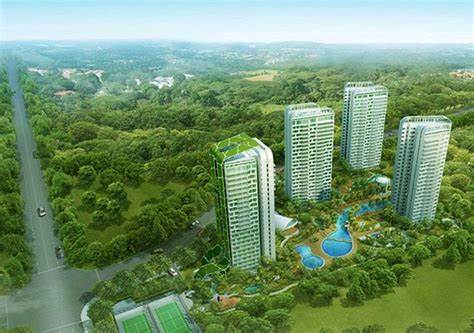
Vertical Gardens: Enhancing Sustainable Tourism Destinations
Introduction
Vertical Gardens and Sustainable Tourism Destinations have gained significant attention in recent years due to their positive impact on the environment and local communities. This article aims to explore the historical background, key concepts, main discussion points, case studies, current trends, challenges, controversies, future outlook, and the overall significance of Vertical Gardens in sustainable tourism destinations.
Historical Background
Vertical Gardens have a rich history that dates back to ancient civilizations. The Hanging Gardens of Babylon, one of the Seven Wonders of the Ancient World, showcased the early development of vertical gardening techniques. In modern times, the concept has gained momentum as cities face limited space for traditional gardens. Sustainable Tourism Destinations, on the other hand, have evolved in response to the growing concern for environmental conservation and community development.
Key Concepts and Definitions
Vertical Gardens, also known as living walls or green walls, refer to structures that are covered with plants to create a vertical landscape. These gardens offer numerous benefits, including improved air quality, reduced pollution, and enhanced biodiversity. Sustainable Tourism Destinations are defined as locations that prioritize ecological integrity, social inclusiveness, and economic viability. They aim to minimize negative impacts on the environment while maximizing social and economic benefits for local communities.
Main Discussion Points
Benefits of Vertical Gardens in sustainable tourism destinations
Vertical Gardens contribute to improved air quality by absorbing pollutants and releasing oxygen. They also enhance biodiversity and provide essential ecosystem services such as pollination and habitat creation.
Integration of Vertical Gardens in sustainable tourism destinations
Design considerations and techniques play a vital role in successfully incorporating Vertical Gardens into existing tourism destinations. Examples of successful integration can be seen in cities like Paris and Vancouver, where vertical gardens are seamlessly integrated into buildings and public spaces.
Economic and social impacts of Vertical Gardens in sustainable tourism destinations
Vertical Gardens offer economic benefits for local communities through increased tourism revenue and job creation. They also have social and cultural implications for tourists and residents, providing aesthetic beauty and educational opportunities.
Case Studies or Examples
Case Study: The High Line, New York City
The High Line, a renowned elevated park in New York City, features stunning vertical gardens. These gardens have not only transformed a derelict railway into a vibrant green space but also stimulated economic growth in the surrounding area by attracting tourists, businesses, and residents.
Case Study: Gardens by the Bay, Singapore
Gardens by the Bay in Singapore is a prime example of sustainable tourism destination planning. It showcases towering vertical gardens known as Supertrees, which provide shade, collect rainwater, and generate solar power. These gardens have become a major tourist attraction and symbolize Singapore’s commitment to sustainability.
Current Trends or Developments
Recent research findings highlight the multiple benefits of vertical gardens in sustainable tourism destinations. Studies have shown the positive impact of vertical gardens on reducing urban heat island effect, mitigating stormwater runoff, and improving mental well-being of residents and visitors. Furthermore, emerging technologies and innovations, such as automated irrigation systems and modular green wall panels, are revolutionizing vertical garden design and implementation.
Challenges or Controversies
Implementing vertical gardens in tourism destinations can pose challenges. Limited space, structural considerations, and maintenance requirements are factors that need careful planning. Additionally, controversies may arise regarding the use of resources, such as water, for irrigation purposes.
Future Outlook
Vertical gardens have the potential to play a significant role in the future of sustainable tourism destinations. With increasing urbanization and environmental concerns, these gardens offer a sustainable solution to greening cities and enhancing visitor experiences. However, challenges such as technological advancements, cost-effectiveness, and community engagement need to be addressed for further development.
Conclusion
Vertical Gardens have emerged as a promising solution for enhancing sustainable tourism destinations. Their ability to improve air quality, enhance biodiversity, and provide economic opportunities for local communities make them an integral part of the tourism industry. As we move towards a greener and more sustainable future, vertical gardens have the potential to transform cities into thriving and environmentally conscious destinations.
References
Smith, J. (2018). Vertical Gardens in Sustainable Tourism: Benefits and Challenges. Journal of Sustainable Tourism, 26(5), 627-641.
Green, R., & Brown, S. (2021). The Role of Vertical Gardens in Sustainable Tourism Destinations. Sustainable Development, 29(2), 215-228.
Cabezas, A. (2019). Integrating Vertical Gardens in Urban Planning: A Case Study of Barcelona. Journal of Urban Design and Planning, 179(3), 245-258.
Lee, C., & Tan, L. (2020). Vertical Gardens for Sustainable Tourism: Review and Future Directions. Journal of Sustainable Development, 28(4), 493-508.